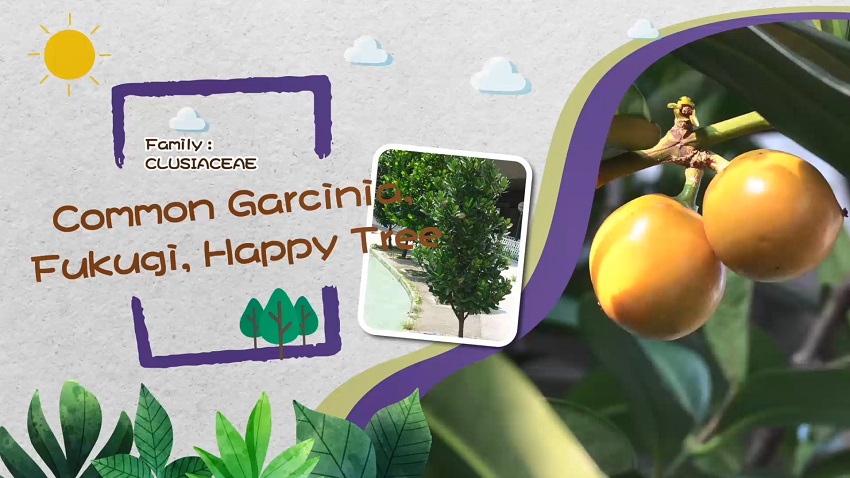| Origins | Ryukyu Islands of Japan, Philippines, Indonesia, Sri Lanka and Taiwan. |
|---|---|
| Ecology | The Common Garcinia is a coastal plant, found in woodlands along the coast. Larvae of the moth Heleanna fukugi Nasu, 1999 under the family Tortricidae feed on its leaves. Ryukyu fruit bat (Pteropus dasymallus (Temminck, 1825)) also feed on its fruit. |
| Applications | The Common Garcinia has a deep and wide tap root system that is resistant to wind and salt. In order to resist attacks from typhoons and sea waves, the plant is used as a windbreak species in the Ryukyu Islands and China. The Common Garcinia has a nearly 300-year history of cultivation in the Ryukyu Islands, where the locals planted them into forest belts and groves guided by the concepts of Feng Shui. The leaves of Common Garcinia are thickly leathery, and do not burn easily, so it is also planted as firebreaks. In addition, its bark can produce yellow dye that can be used to colour fabrics, such as for Okinawan Bingata. In recent years, scientific research has found that the Common Garcinia has certain therapeutic functions, such as anti-cancer, anti-inflammatory and antibacterial properties. The tree crown of this species is conical, with evergreen leaves that contribute to a beautiful growth form. In Hong Kong, it has been widely planted as greenery and street trees in recent years. |
| Meanings of name | The Japanese name for this plant, "Fukugi", means "tree of happiness", which symbolizes the hope for harmony between man and nature. “Fortune Wood (福木)” is the Chinese translation of "Fukugi". Since Philippines is one of its origin, the species was given the name “Filipino Fortune Wood (菲島福木)” in Chinese. |












